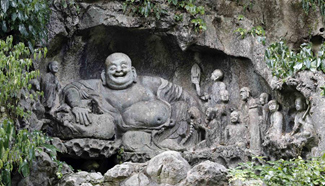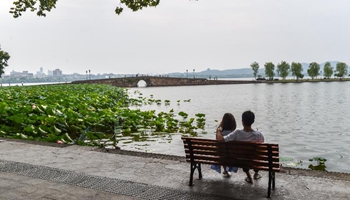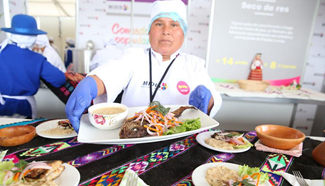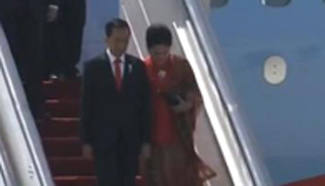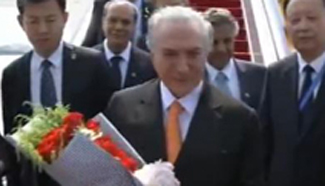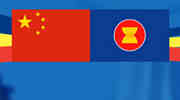LHASA, Sept. 2 (Xinhua) -- The models walked down the catwalk like rainbows following a storm, the colorful garments flapping in the wind and confidence beaming from the models like sun rays breaking through the clouds.
This fashion show, on Friday morning in Lhasa, capital of the southwestern autonomous region of Tibet, featured traditional Tibetan ethnic costumes but with a 21st century flair.
The fashion show was held as part of Shoton Festival, which began Thursday.
Shoton Festival, also known as the Yogurt Banquet Festival, is a week-long extravaganza that has been held since the 11th century. It was originally a religious occasion when locals would offer yogurt to monks who had finished their meditation retreats.
The schedule for year's event features Tibetan opera performances, hiking, and exhibitions featuring thangka, paintings and photographs, according to Wu Yasong, Lhasa's deputy mayor. Last year, more than 200,000 people came to Lhasa for the festival.
Penpa Tashi, 21, was one of the models at Friday's fashion show. In an exquisite, ankle-length golden silk robe, the Xizang Minzu University student exuded confidence and poise as she walked down the seven-meter long red-carpeted catwalk. Her gracefulness is no surprise, Penpa is an old hand at this, having dabbled in modeling for years, and is a three-time festival veteran
"Traditional Tibetan clothes are often exquisite and sumptuous, and what I wore today was a prime example of that," said Penpa.
"It was a great show," said Chen, a tourist from neighboring Sichuan Province. "I really liked what I saw, and I ordered some Tibetan clothes to wear at celebrations at home."
Among the audience were many of the older Tibetan generation, who were in awe at the way in which the designers had knitted together the old and new to create something reflective of Tibet; where tradition and modernity meet.
"I am so very proud that our ethnic clothes are on display," said Pasang, a local who watched the show. "Our clothes are a reflection of our wisdom, creativity and artistic taste," she said.
Model Thubten Gyatso was determined to make this year's show one of the best he has ever walked in.
"What I wore today was better quality and more fashionable than anything I have worn for past shows," Thubten said. "The clothes were traditional, but looked quite modern and fashionable."
Currently there are more than 20 types of Tibetan ethnic clothes, according to government figures. In Lhasa, for example, the traditional attire is a long, heavy robe, which is worn with a thick, wide material belt. It features a wide, round collar, and is very practical during the winter months as it keeps out the bitter cold.
Designer Tashi said that all the clothes on show were altered to reflect modern sartorial trends.
"I tried to combine traditional craftsmanship with contemporary fashion styles," he said. "I hope that by doing so, I am not only promoting our culture, but helping to promote Tibetan costume to the younger generation."

